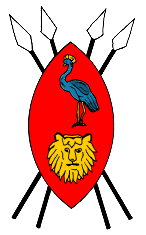Ruanda-Urundi: Difference between revisions
Jump to navigation
Jump to search
Knorrepoes (talk | contribs) m (Text replacement - "|Arms of {{PAGENAME}}]]" to "|Coat of arms (crest) of {{PAGENAME}}]]") |
Knorrepoes (talk | contribs) m (Text replacement - "===Official blazon===↵↵===Origin/meaning===" to "{| class="wikitable" |+Official blazon |- |'''English''' | blazon wanted |} ===Origin/meaning===") |
||
| Line 5: | Line 5: | ||
[[File:ruandaurundi.jpg|center|Coat of arms (crest) of {{PAGENAME}}]] | [[File:ruandaurundi.jpg|center|Coat of arms (crest) of {{PAGENAME}}]] | ||
= | {| class="wikitable" | ||
|+Official blazon | |||
|- | |||
|'''English''' | |||
| blazon wanted | |||
|} | |||
===Origin/meaning=== | ===Origin/meaning=== | ||
Latest revision as of 14:13, 29 January 2024
| Heraldry of the World |
| Burundi heraldry portal |
|
RUANDA-URUNDI
| English | blazon wanted |
Origin/meaning
Ruanda-Urundi was a part of German East Africa under Belgian military occupation from 1916 to 1924, a League of Nations class B mandate of Belgium from 1924 to 1945 and then a United Nations trust territory (still Belgian) until 1962, when it became the independent states of Rwanda and Burundi.
The colonial arms of Ruanda-Urundi were never officially granted, but showed a local shield, with in the upper half a crane, and in the lower the lion's head. These arms were used until 1962.
Contact and Support
Partners:
Your logo here ?
Contact us
© since 1995, Heraldry of the World, Ralf Hartemink 
Index of the site














